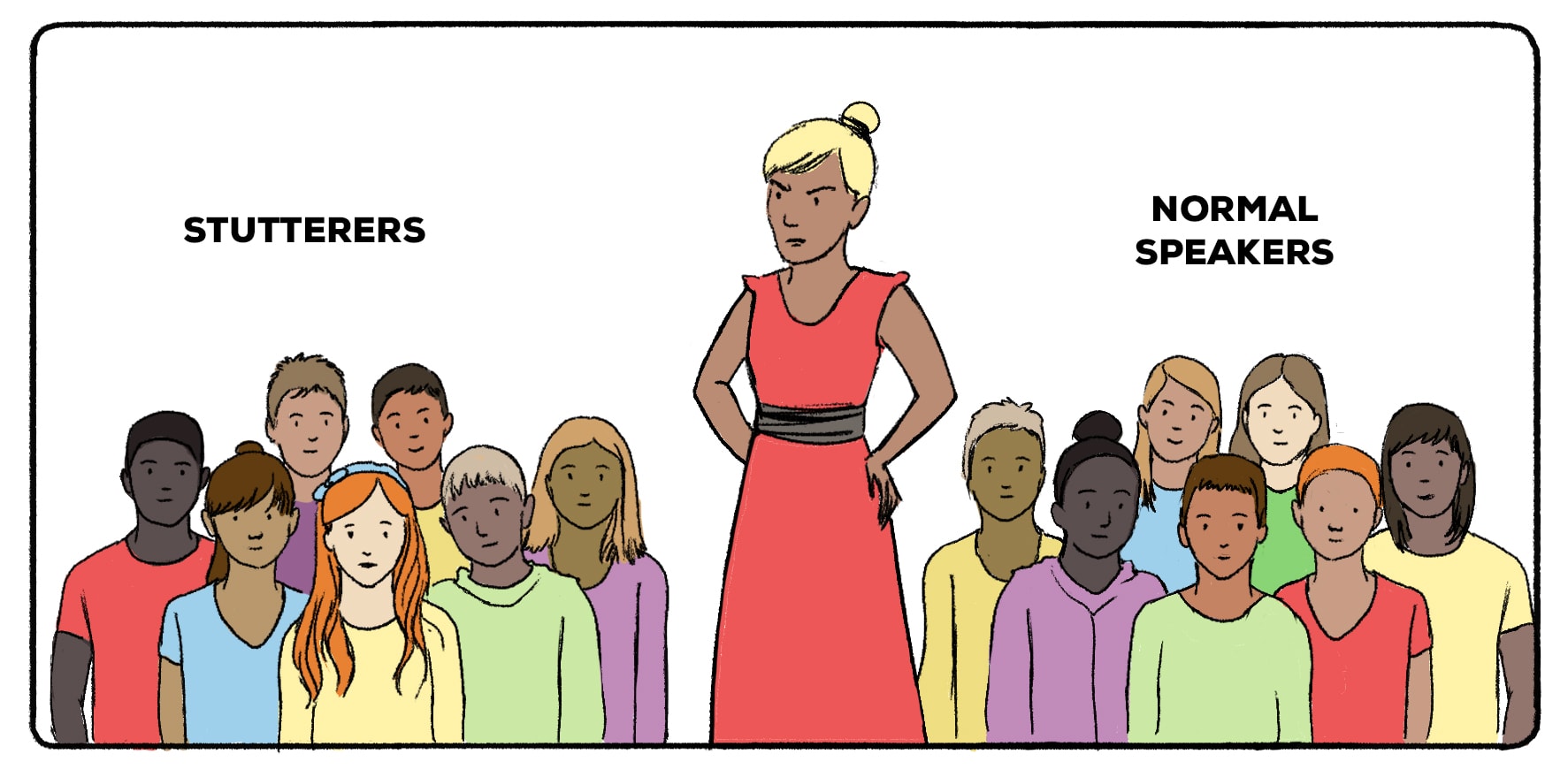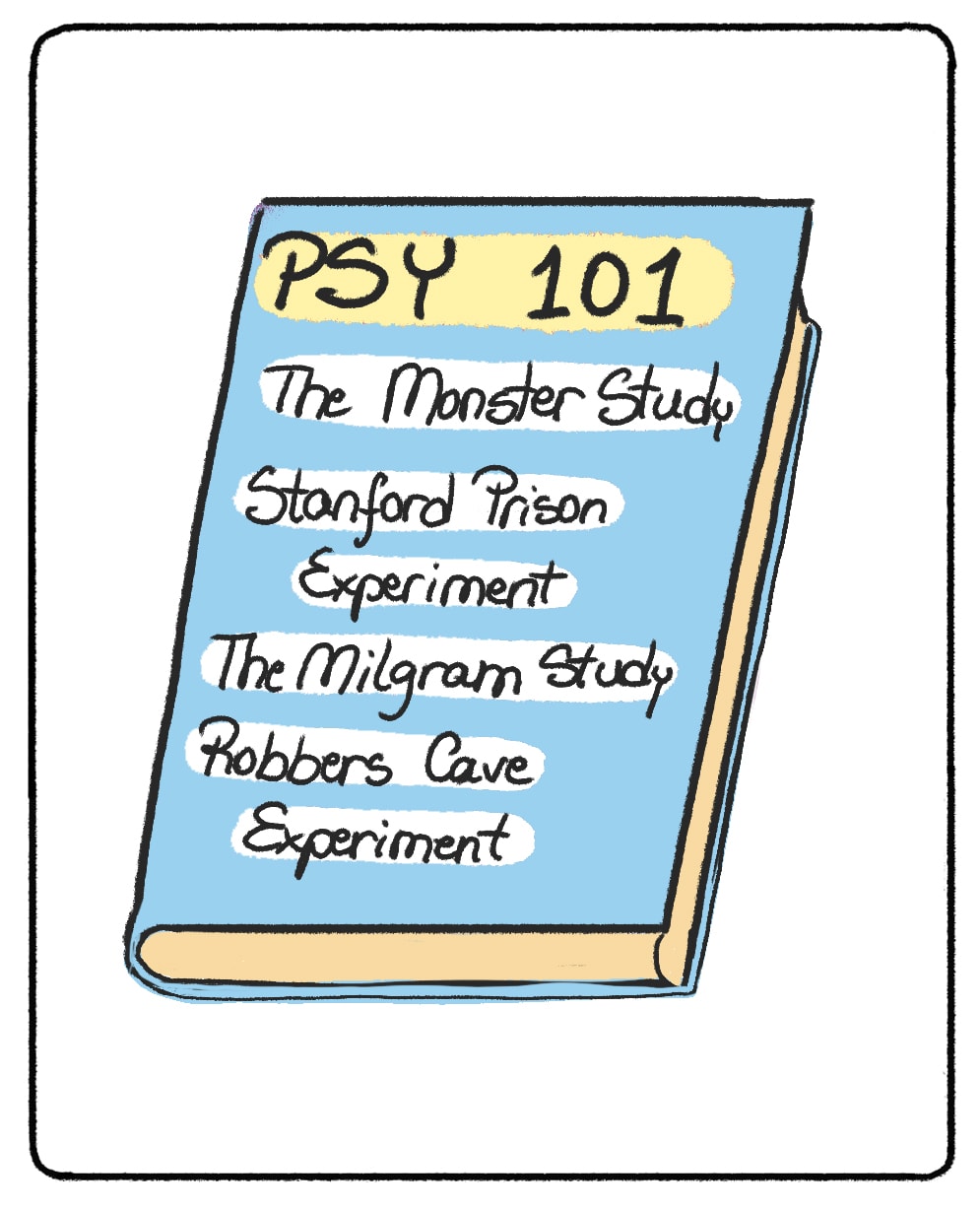Psychologists and scientists often go into their line of work for the betterment of mankind. Through their experiments and tireless work, they hope to discover information that will cure diseases, uncover the root of certain disorders, and improve the general health of the population. That being said, it has not always been approached in the best way. Experiments on humans, especially those in marginalized groups, often cross ethical lines. One of the most well-known, line-crossing experiments is The Monster Study.
The experiment is not called the Monster Study because it involves any monsters - but it did threaten to ruin the reputation of the psychologists behind it. The idea was so scary to fellow the psychologist’s peers that the results were hidden away for years.
What Is The Monster Study?
The Monster Study was conducted by Dr. Wendell Johnson (a speech pathologist) to learn more about why children developed a stutter. Johnson developed the Monster Study to see if stuttering was a result of learned behavior or Biology, however, there are many ethical problems with the study.
When Was the Monster Study Conducted?
Dr. Johnson conducted the Monster Study back in 1936 at the University of Iowa. Ethics were not prioritized as they are now in psychology and scientific experiments. If this experiment had been proposed today, the researcher may have been stopped before they could begin!
What Happened in the Monster Study?
Johnson chose 22 orphans as participants for The Monster Study. Some of the orphans had a stutter. (It’s not uncommon for young children to have a stutter and then naturally “get over” the stutter without treatment.) Some of the orphans didn’t have a stutter.

The orphans were split up into two groups, with stutterers and non-stutterers in both groups. One of these groups were labeled “normal speakers.” The others were labeled “stutterers.” Throughout the course of the experiment, the children were treated as such.
Johnson’s team met with the children every few weeks for five months to “evaluate” their speech. Children in the “normal” group were praised for their ability to speak well, even if they were actually stuttering or had problems speaking. Children in the “stuttering” group were told that they spoke poorly. They were told things like, “You must try to stop yourself immediately. Don't ever speak unless you can do it right.”
So what happened?
Results of The Monster Study
The children who were labeled “normal” weren’t affected much by the researchers’ praise. They saw improvement in only one child.
Children in the “stuttering” group fared a lot worse. Remember, not all of these children actually had a stutter - they were just told that they had a stutter. Of the six children that were falsely chastised for their speech, five developed speech problems. Reports show that these children became withdrawn and some stopped speaking altogether. These children were as young as five years old.
The study was created with good intentions. Johnson and his colleagues at the University of Iowa frequently conducted studies on themselves and willing adult subjects in the name of finding a cure for stuttering. But other colleagues worried that the use of orphans was crossing lines. Johnson wasn’t the only person conducting studies on marginalized groups in the name of science - Nazis were doing the same thing over in Germany. So the results of the study were never published.

The Impact of the Monster Study
Even in the 1930s, the Monster Study was crossing lines. Using orphans as test subjects is one thing - using minors in a study without their consent is another. Even the staff at the orphanage were unaware of what was really going on. This left many of the “stutterers” with unresolved psychological trauma. Researchers knew that this was a possibility. One member of Johnson’s team wrote “'I believe that in time they...will recover, but we certainly made a definite impression on them.”
She was right. The students’ schoolwork suffered and one ran away from the orphanage two years later. Later, she said that the study ruined her life.
Subjects didn’t know that they were a part of a study until sixty years after it happened. Only a handful of speech pathology students at the University of Iowa learned about the study after it was published. The information was useful - no one at the time had collected so much data about stuttering and how it developed. But the premise of the study was so horrifying that they nicknamed it “The Monster Study.”
The Monster Study didn’t become nationally infamous until 2001. The San Jose Mercury News published a series of articles about the study and commentary from speech pathologists. While some argued that the experiment crossed many ethical boundaries, others argued that it was just a result of its time. Some acknowledged the importance of the data, while others said that it didn’t come to any real conclusions.
At that point, Wendell Johnson had been dead for over 30 years. The University of Iowa issued a formal apology for the study. As all of this made national news, subjects started to learn the truth about what had happened to them.
The Lawsuit
The subjects sought justice. In the early 2000s, three of the subjects in the “stutterer” group sued the University of Iowa for emotional distress and fraudulent misrepresentation. The estates of three of the other “stutterers” were also included in the lawsuit. The plaintiffs claimed that the impact of the study had a lasting impact. One still “hates to talk.” Another, who says she now has a good life, said that she didn’t have many friends in the orphanage partly because she was so quiet.
They won their settlement and the University of Iowa paid over $1 million to the victims and their estates.
Importance and Infamy of The Monster Study
This study should never be repeated, but it shouldn’t be swept under the rug, either. The Monster Study is an important lesson about transparency and consent in experiments. If we don’t learn from these mistakes, we are bound to repeat them. Even 60 years later, it’s important to talk about The Monster Study, why it was wrong, and how psychology has evolved into a more ethical science.
Other Infamous Experiments in Social Psychology

The Monster Study is not the only controversial experiment in social psychology. It often ends up on lists besides experiments like the Stanford Prison Experiment and the Milgram Experiment.
The Stanford Prison Experiment
In the 1970s, psychologist Philip Zimbardo recruited a group of young men to pose as guards and prisoners. The guards received no formal training - just instructions to guard the prisoners. Although The Stanford Prison Experiment was meant to take place over the course of two weeks, it was cut short. The results were chilling, and have since been disputed.
Why did it get shut down? Allegedly, the guards took the role so seriously that they began to act cruelly toward the prisoners. Zimbardo asked the guards not to resort to physical violence, but they did. By the sixth day of the experiment, the prisoners had threatened to overthrow the guards. One prisoner stopped eating. Another had a breakdown. Yet, it took six days to call the whole experiment off.
The Milgram Experiment
Participants in the Milgram Experiment were faced with a choice: to shock (or not to shock) another participant. No electric shocks were actually administered, but the participants believed they would be. Researchers pressured the participants to administer the shock, despite the knowledge that the shocks were harmful or even deadly. Stanley Milgram put the experiment together to see how far people would go to obey the order of another.
Robbers Cave Experiment
This experiment was similar to the Stanford Prison Experiment, but with slightly younger participants. The Robbers Cave Experiment brought together two groups of boys at a summer camp. Researchers separated the two groups, assigned them names, and began to create conflict between them. Results were not as dramatic as the Stanford Prison Experiment, but similar criticisms have arisen. Also, like the Stanford Prison Experiment, the study only used young, white boys in the experiment, but made wide generalizations about social psychology. Excluding such a large portion of the population may be okay if you’re doing a study on one demographic, but this should be mentioned in the research.
What do all of these experiments have in common? They all have the potential to cause great trauma. The events of the experiments may not be “real” to researchers, but they are “real” to participants. The participants in the Milgram experiment truly believed they were administering deadly shocks. Prisoners in the Stanford Prison Experiment were physically harmed. Those effects don’t “go away” when the experiment is over. And usually, a participant may not understand the premise of an experiment before they sign up. This is why ethical codes in psychology are especially important, both for the participants in research and for anyone who views the conclusions derived from the research.
How to Conduct Ethical Experiments in Psychology
Ethics is more important nowadays than it was in the 1930s. But how do psychologists ensure that their experiments are ethically sound? Organizations like the American Psychological Association put together guidelines for psychologists and researchers to follow. Guidelines from the APA have been in place since the 50s, but they are constantly evolving.
Principle A: Beneficence and Non-maleficence
This principle goes beyond being nice. The APA encourages professionals to care for the people who are subjects in their research. Eliminating biases and prejudices is just one way that psychologists can act with beneficence and non-maleficence. (It’s important to note that subjects include humans and animals.)
Principle B: Fidelity and Responsibility
Psychologists have a responsibility not only to consider the well-being of their subjects, but to ensure that colleagues are acting ethically, too. The psychologists working alongside Philip Zimbardo or Stanley Milgram also had a responsibility to inform their colleagues of the possible effects of their controversial experiments.
Principle C: Integrity
Psychology research is supposed to reveal the truth about the way the mind works. Professionals may have an idea about how the study will turn out, but they must keep an open mind. If the results don’t match the psychologist’s hypothesis, they have to report that honestly. Skewing the results, or skewing the study in order to get certain results, is not ethical.
There is controversy as to whether Philip Zimbardo, for example, skewed the Stanford Prison Experiment to make the guards more cruel to prisoners and the results more dramatic. But to find the expose that challenges his findings is harder than learning about the Stanford Prison Experiment itself!
Principle D: Justice
Treating everyone equally is crucial to keeping psychology a just field. Patients should be held in the same esteem regardless of their background, age, education level, etc. They should also have access to important information in psychology that might benefit their lives and the lives of others.
Principle E: Respect for People's Rights and Dignity
Finally, psychologists must show respect for the rights and dignity of all people. Maintaining confidentiality is one way to achieve this goal. Why? Think about the Milgram experiment. How would you feel knowing that, under the pressure of the experiment, you hit the “shock” button? People might tell you that you’re cruel. You might feel guilty already, and your guilt may be amplified if your identity were to get out. Confidentiality is key to dignity.
